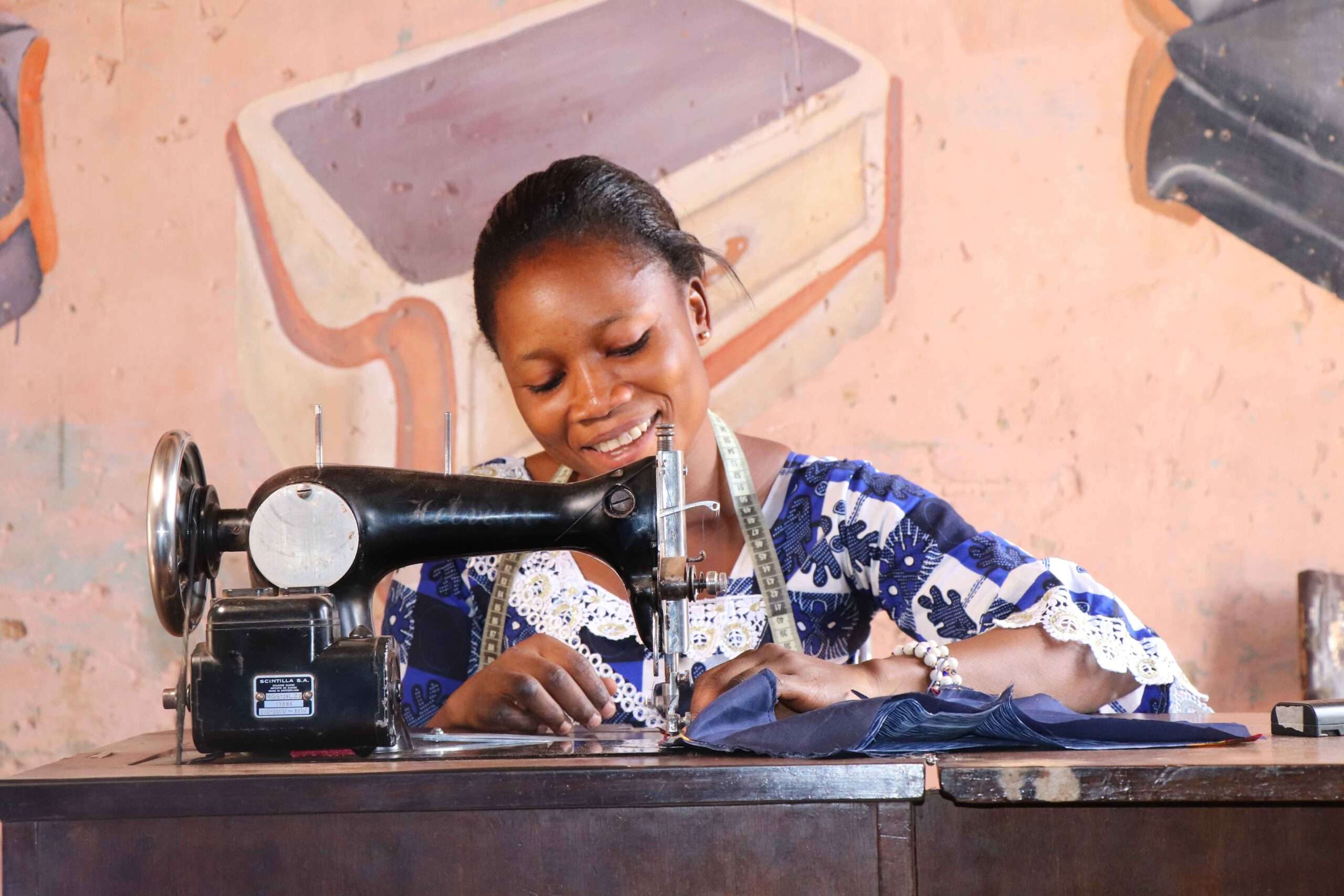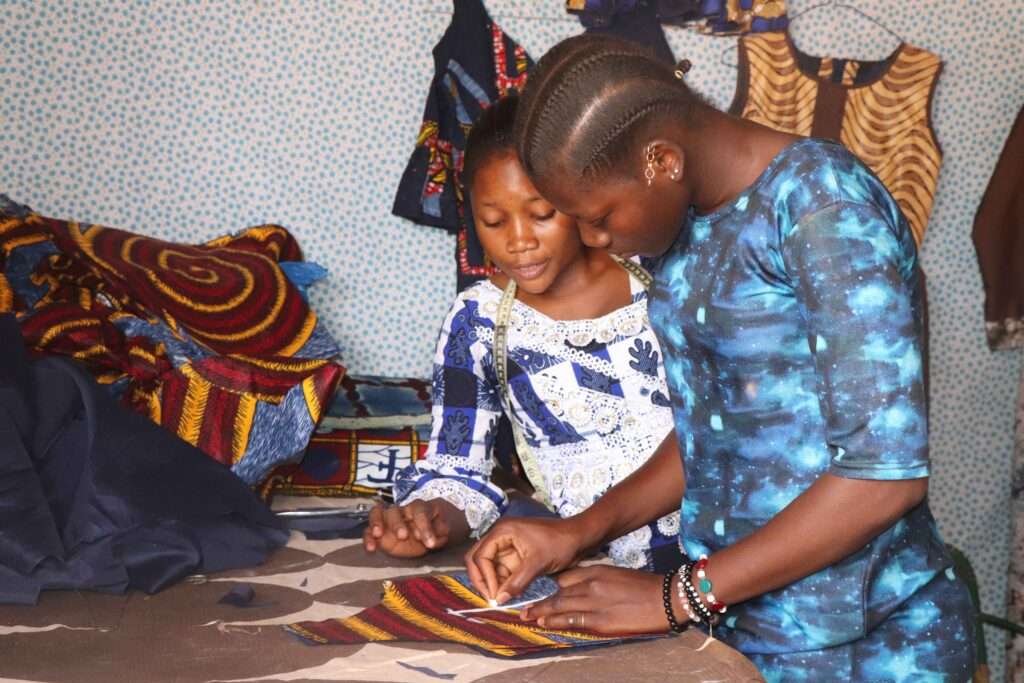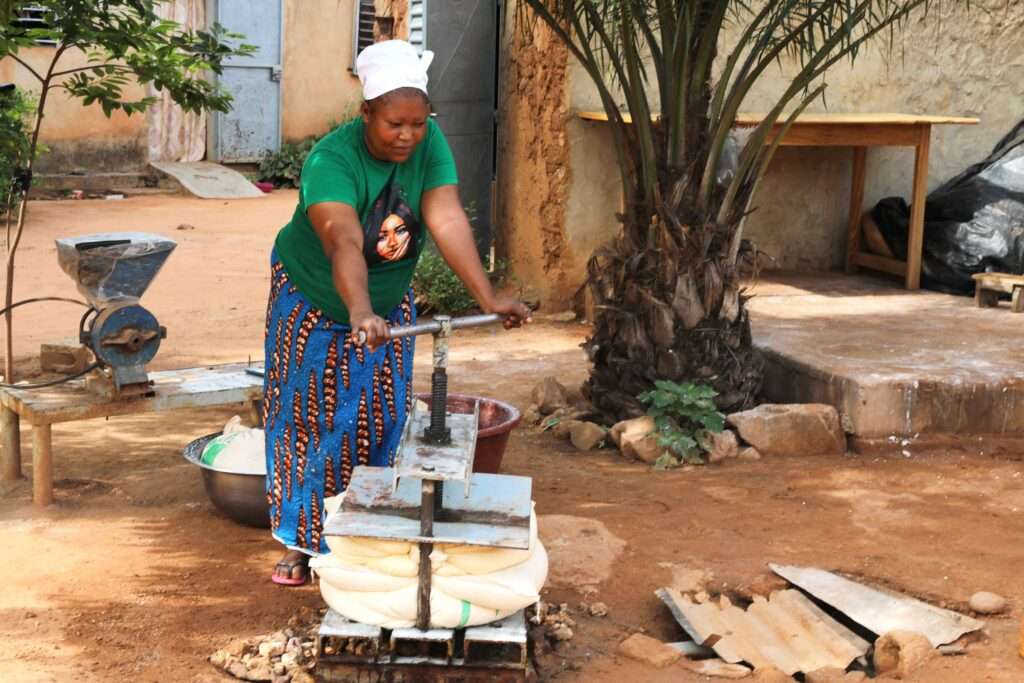
When Tanager began implementing Cultivons L’Esprit d’Entreprise (CLE), its youth entrepreneur project, in Burkina Faso in 2020, it had limited time to achieve some ambitious goals. “It was only a three-year program, so we had to do things quickly,” says Romain Kenfack, Burkina Faso country representative for Tanager and CLE team lead. Within those three years, CLE would have to:
- Introduce and educate young adults throughout the country on the concept of entrepreneurship;
- Train 1,500 aspiring entrepreneurs;
- Provide seed funding to 100 promising business ideas; and
- Offer in-depth incubation support to 25 young entrepreneurs.
The project also needed to be gender-sensitive and engage parents and guardians to ensure young adults had emotional support to achieve their aspirations. Combined, these efforts would work to address the significant unemployment issues facing young adults in Burkina Faso.
CLE handily met, and in most cases exceeded, those goals. The project also helped create nearly 500 new jobs, as well as108 apprenticeships or internships. Twenty-eight businesses also launched or grew under CLE.
In some cases, project impacts extended even beyond the target youth. Among those 28 businesses that launched or grew under CLE, for example, were three that served as project implementation partners. Local partners La Fabrique, WakatLab, and MediaProd (now Massaka) all expanded their client rosters, recruited new staff, and increased their annual revenues by 120% last year alone.
“For me, [CLE was] one of my best professional experiences,” says Igor Yaméogo, a representative with Wakatlab.
Adjusting Tactics Based on Learnings
The project’s impressive results would not have been possible without the team’s commitment to learning from project gains and missteps, however. Taking the time to gauge what worked, and what didn’t, enabled Tanager’s Burkina staff to adjust tactics to achieve maximum impact. Among the learnings:
There is a hunger in Burkina Faso for entrepreneurship training. CLE yielded significant demand when it first advertised its basic entrepreneurship training, which required hard choices around which applicants would receive the in-person training. Though engagements were primarily planned to be physical and in person, the level of demand prompts questions about what training methods could ultimately reach the widest possible population.
Successful entrepreneurs learn and innovate quickly. Businesses need to continually be on the cutting edge to stay relevant. Kenfack notes how a hair stylist, for example, needs to stay up to date on trends and offer the latest styles and services to their clients. “It’s amazing to see that something that they were doing six months ago is no longer what they’re doing now,” he says. “You have to bring new materials, new products [to the table].”
Technical training, however, was required for aspiring CLE entrepreneurs to succeed. Before they could get to innovating, the would-be entrepreneurs needed to become more technically adept.
The maturation camps, during which young adults tested and developed their business ideas, revealed the need for specific technical training, such as weaving, drying techniques, and equipment maintenance. The project therefore ended up reallocating part of the budget to provide technical training to 300 selected project ideas, where skilled masters provided a 1-month on-site training and 3-month coaching to each young entrepreneur. The technical training was key in creating and maintaining jobs among CLE participants—110 of them have continued to work with the skilled masters.

Mixed approaches can work for service delivery. As part of the CLE journey, three entrepreneurs in the city of Dori had been selected to receive incubation support. Insecurity, as well as the sporadic nature of the city’s utilities—including running water, electricity, and Internet connectivity—made it so that CLE partner La Fabrique could not deploy in-person incubation activities there as planned.
According to Kenfack, however, the project took the opportunity to pilot a mixed approach that incorporated online training and coaching with in-person sessions. The project developed five two-hour webinars, preceded by online assessments prior to each webinar. Seven working sessions were also held online, around the topics of strategic diagnostics, business planning, and business planning. These were supplemented with quarterly in-person sessions and networking events in Ouagadougou.
Post-incubation period, results showed that sales for these entrepreneurs rose at a similar rate to the incubated businesses that received in-person services.
A strong partnership with the regional directorate of youth and entrepreneurship was critical. The project planned to partner with more local organizations but found during baseline data-gathering that those local partners relied on trainers from the regional directorate of youth. The project team therefore opted to partner directly with the regional directorate and invest to reinforce the capacities of the regional directorate to own the training tools.
This turned out to be beneficial when increased insecurity made it difficult to work in three of the 12 municipalities where CLE activities were being implemented. Instead of risking traveling to work in those municipalities, the project instead worked through representatives of the provincial directorates—as well as the private association, Maison de l’Entreprise—to conduct minimal follow-up with the young adults participating in the program.
Systemic solutions are necessary to achieve broad, lasting impact, systemic solutions are needed. CLE interventions were widespread and leveraged partners at all tiers of Burkinabé society. Even so, contends Kenfack, “We were not systemic enough.”
Case in point: “We were only able to do this journey once, so any youth that were not able to join [in CLE] did not have an opportunity to benefit.” Indeed, CLE project acted as a pilot, rather than a full-blown intervention, that would help Tanager, its funder, the Kingdom of the Netherlands, and other partners better understand what interventions could target youth unemployment.
“And then,” Kenfack adds, “we were not rural enough.”
Indeed, data gathered through monitoring and evaluation showed that more of the participants hailed from urban areas and traveled out to peri-urban areas to participate in the CLE activities, rather than rural participants traveling toward the cities. (Distance was cited as one of several reasons why some participants dropped out of the program. Young women additionally named illness, childcare, and agricultural field work that prevented them from completing the program.)
CLE also found that those participants who successfully completed the program were more educated than expected.
Follow-On Project
These learnings have allowed Tanager and the Kingdom of the Netherlands to again partner on a follow-on project to CLE. Carrefour des Opportunités (CarrOpps), which translates to “Opportunity Crossroads,” will combine the entrepreneurial approach piloted through CLE with specialized training across a range of areas designed to support youth making the transition to adulthood. These include conflict resolution, hygiene practices, negotiation skills, and more.
Given the gaps found in supporting rural youth—who are most at risk of becoming involved with violent extremist groups—CarrOpps will offer hundreds of both in-person and digital hubs in 50 municipalities across Burkina Faso. These hubs will provide a mix of social services, community engagement activities, employment readiness training, and entrepreneurial training. And, similar to CLE, CarrOpps will partner with local partners and institutions to ensure the systemic solution needed to fully address the country’s unemployment issues.
“Anytime a young person can join and learn from the life and entrepreneurial training being offered, that is what we want to encourage. That is what we’re trying to build with CarrOpps,” says Kenfack.


